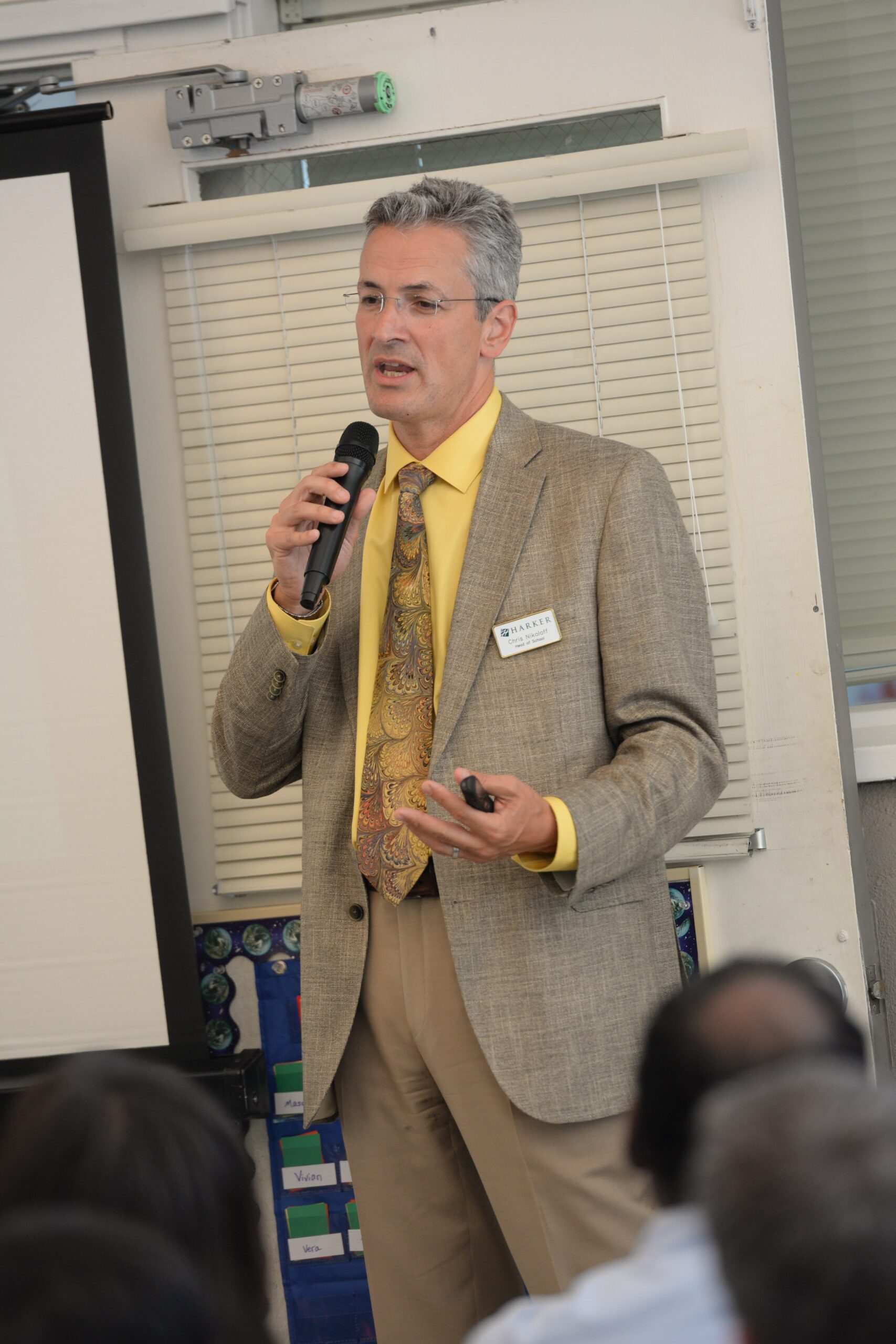This article originally appeared in the fall 2015 Harker Quarterly.
My first boss in education, a middle school principal in the Hayward public school system, used to flit around campus on the first day of school saying that when he stopped getting first-day butterflies, he would leave education. I think this “tummy check” is good for educators.
The beginning of the school year after a long summer is a time of possibility, a time of excitement. Friends, teachers, students, parents all reunite, coming together toward the common purpose of bringing out the best in the children.
Schools are a unique mix of “now” and “forever.” We want students and teachers to have as rich an experience as possible, to focus on the process, the journey, the “now”; yet we are all preparing for the future, to help students take their deep learning and make a meaningful impact on the world to, in the words of Henry Adams, “affect eternity.”
At the beginning and end of summers, I often wonder what happened to the year-round school trend. Summer is still here, even though, as Time pointed out in its recent article “Who Killed Summer Vacation?” summer feels shorter to all of us. Some schools across the country have adopted a year-round schedule with intermittent breaks, but the trend hasn’t seemed to sweep the educational system as anticipated. There are plenty of schools with a traditional calendar that includes vacations.
There may be many reasons why this is the case – an entrenched summer programs industry, family vacations, school budgets – but regardless of the reasons for summer’s persistence, there remain, I believe, cognitive benefits from the break summer provides. We now understand that much learning is consolidated during sleep; that time away from the grind can bring fresh insight; that top athletes cycle their training in peaks and valleys to allow the body to heal from exertion.
There are two types of learning, and we hope our children experience both: cumulative and transformational. Cumulative learning is the most familiar: we learn the events that led up to the Civil War, the grammatical components of a foreign language, the steps in a geometry proof, the solubility table. Transformational learning is when the learner doesn’t just accumulate knowledge but becomes a different learner altogether.
In transformational learning, perhaps the student falls in love with a subject; has an insight into an historical event or a scientific phenomenon; learns how to learn; takes ownership of his or her studies; sees the connections between two disciplines; discovers what he or she wants to study in college. Both cumulative and transformational learning are necessary, but cumulative learning is a step on the student’s journey while transformational
learning is a leap.
So the opening of the new school year – after a long or short summer – is a magical time, an exhilarating time, a time of possible transformation. No one can predict when a child will hit a growth spurt, either physically or cognitively or otherwise, but we can nurture, like a garden, the conditions for growth. We want for our children the best in learning and growth, and we hope for them, as we do our educators, the butterflies that this time of year brings.
